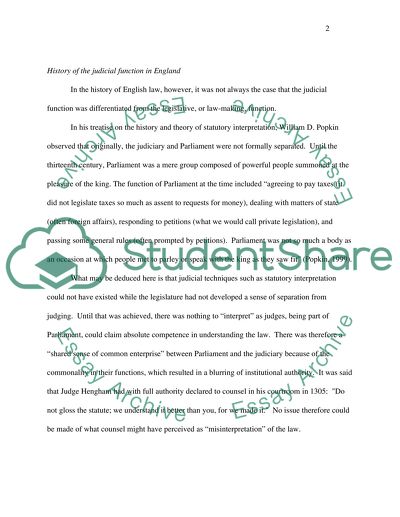Cite this document
(n.d.)
Retrieved from https://studentshare.org/miscellaneous/1550390-the-role-of-the-judge-is-to-declare-what-the-law-is-and-not-to-make-itdiscuss-this-statement-with-reference-to-the-theory-and-practice-of-both-statutory-interpretation-and-the-doctrine-of-precedent
Retrieved from https://studentshare.org/miscellaneous/1550390-the-role-of-the-judge-is-to-declare-what-the-law-is-and-not-to-make-itdiscuss-this-statement-with-reference-to-the-theory-and-practice-of-both-statutory-interpretation-and-the-doctrine-of-precedent
()
https://studentshare.org/miscellaneous/1550390-the-role-of-the-judge-is-to-declare-what-the-law-is-and-not-to-make-itdiscuss-this-statement-with-reference-to-the-theory-and-practice-of-both-statutory-interpretation-and-the-doctrine-of-precedent.
https://studentshare.org/miscellaneous/1550390-the-role-of-the-judge-is-to-declare-what-the-law-is-and-not-to-make-itdiscuss-this-statement-with-reference-to-the-theory-and-practice-of-both-statutory-interpretation-and-the-doctrine-of-precedent.
“The Role of the Judge Is to Declare What the Law Is, and Not to Make Essay - 1”, n.d. https://studentshare.org/miscellaneous/1550390-the-role-of-the-judge-is-to-declare-what-the-law-is-and-not-to-make-itdiscuss-this-statement-with-reference-to-the-theory-and-practice-of-both-statutory-interpretation-and-the-doctrine-of-precedent.


